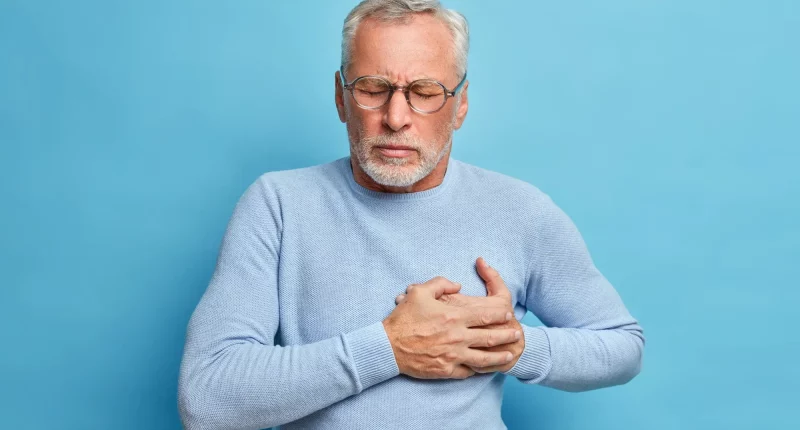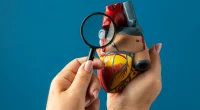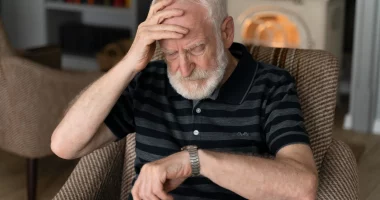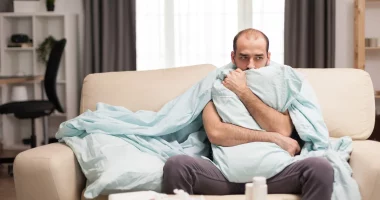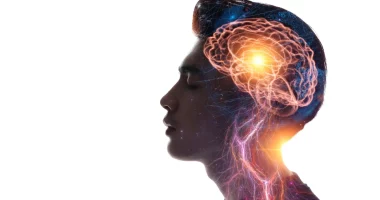Sudden cardiac arrest happens when there’s a problem with the heart’s electrical system, causing it to suddenly stop beating. This stops blood from flowing to the body’s organs, which can be life-threatening if not treated right away.
In this section, we’ll explain what occurs during cardiac arrest, the signs to watch for, and the steps to take if it occurs. We’ll also discuss the treatments available, the chances of survival, and the risk factors that can increase the likelihood of experiencing a cardiac arrest.
If someone shows symptoms of cardiac arrest, like fainting or not having a pulse, call 911 or go to the nearest hospital emergency room immediately. Quick action can save a life.
What Occurs During Cardiac Arrest?
The heart works by receiving electrical signals that tell it when to beat and how often. Each time the heart beats, it pumps blood through a network of blood vessels to the rest of the body.
Sometimes, these electrical signals can be disrupted, causing the heart to beat irregularly, which is known as an arrhythmia. There are many different types of arrhythmias. Some don’t cause any noticeable symptoms, but others can lead to cardiac arrest.
Cardiac arrest occurs when the heart suddenly stops beating, which means blood is no longer being pumped over the body. This is a critical condition that requires immediate medical attention.
It’s important to note that cardiac arrest is different from a heart attack. A heart attack happens when a blood vessel in the heart is blocked, preventing blood from reaching part of the heart muscle, which can cause damage.
Signs and Symptoms
The most common sign of cardiac arrest is a sudden loss of consciousness, meaning the person may faint or pass out. When someone is in cardiac arrest, they usually don’t have a detectable pulse or heartbeat.
Before fainting, some individuals might experience other symptoms, like:
- Dizziness: Feeling lightheaded or unsteady.
- Racing Heartbeat: The heart may feel like it’s beating very fast.
- Chest Pain: A feeling of discomfort or pain in the chest area.
- Shortness of Breath: Difficulty breathing or feeling like you can’t catch your breath.
- Nausea: Feeling sick to the stomach, sometimes with vomiting.
Not like a heart attack, which can sometimes have warning signs over time, cardiac arrest often happens suddenly and without warning. However, people who have had heart attacks in the past have a higher chance of experiencing sudden cardiac arrest.
Treatment
Once someone receives emergency care for cardiac arrest, they will need further treatment at the hospital.
At the hospital, healthcare providers will carefully monitor the person’s condition and might use medications to reduce the chance of another cardiac arrest. They will also perform tests to figure out what caused the arrest. These examination results help healthcare providers create a plan for long-term treatment.
For instance, if a person has heart disease, they might need surgery to improve the heart’s blood flow. Healthcare providers might also suggest an implantable cardioverter defibrillator.
An ICD is a small device that is placed under the skin in the chest or abdomen. It sends electrical shocks to the heart when needed to correct irregular heartbeats and keep the heart beating normally.
While in the hospital, it’s important for the person to rest and let their body heal.
Healthcare providers may also recommend lifestyle changes, such as a heart-healthy diet and regular exercise. They might suggest cardiac rehabilitation, which is a program that offers support and guidance to help with recovery and improve heart health.
Causes and Risk Factors
Many cardiac arrests are caused by ventricular fibrillation, a kind of irregular heartbeat. This condition makes the heart’s lower chambers beat erratically, so the heart cannot effectively pump blood to the remaining body.
Several health conditions can heighten the chance of developing an electrical problem in the heart that may lead to cardiac arrest. These conditions include:
- Ischemic Heart Disease: This occurs when plaque accumulates in the arteries, blocking or restricting blood flow to the heart.
- Abnormal Magnesium or Potassium Levels: Imbalances in these minerals can affect heart function.
- Lack of Oxygen or Severe Blood Loss: Both can put stress on the heart and lead to cardiac arrest.
- Intense Exercise: For individuals with existing heart conditions, strenuous physical activity can trigger cardiac arrest.
- Structural Heart Problems: Conditions like an enlarged heart can affect its ability to function properly.
- Inherited Heart Issues: Genetic disorders such as long QT syndrome can increase the risk.
- Stimulant Drugs: The use of drugs like amphetamines can also contribute to the risk.
Prevention
To decrease the chance of cardiac arrest, everyone can adopt a heart-healthy lifestyle. This includes eating a balanced diet, regular physical activity, and avoiding smoking. Maintaining a moderate weight is also crucial for heart health.
For individuals who are at higher risk of cardiac arrest, like those with heart disease, additional measures may be necessary. A healthcare provider might prescribe medications to help lower blood pressure or decrease cholesterol levels, which can help prevent cardiac arrest.
For individuals who have faced cardiac arrest in the past, having an implantable cardioverter defibrillator can significantly lower the risk of future events. It’s also important to follow the prescribed treatment plan carefully to manage the condition effectively.
Surviving Cardiac Arrest
It is possible for an individual to survive unexpected cardiac arrest, but survival often depends on how rapidly and effectively they get treatment like CPR (cardiopulmonary resuscitation) or defibrillation.
A review published in BMC Critical Care in 2020 analyzed 141 studies on survival rates for individuals who had got CPR after cardiac arrest. The review found that, in about 30% of cases, blood circulation was restored with CPR. Of those who had blood circulation restored, 22% were able to make it to the hospital, and 9 percent survived long enough to be discharged from the hospital.
Survival chances can also be affected by other factors, such as the person’s age and overall health.
Summary
Sudden cardiac arrest occurs when the heart suddenly stops beating due to an electrical malfunction, leading to a lack of blood flow to the body. Signs include sudden loss of consciousness and no detectable pulse. Treatment involves immediate emergency care, followed by hospital treatment where doctors use medications and may recommend devices like implantable cardioverter defibrillators. Preventive measures include a heart-healthy lifestyle and, for those at high risk, medications. Survival chances depend on the speed of treatment, with over 30% of people having blood circulation restored through CPR. Age and overall health also play a role in survival rates.
